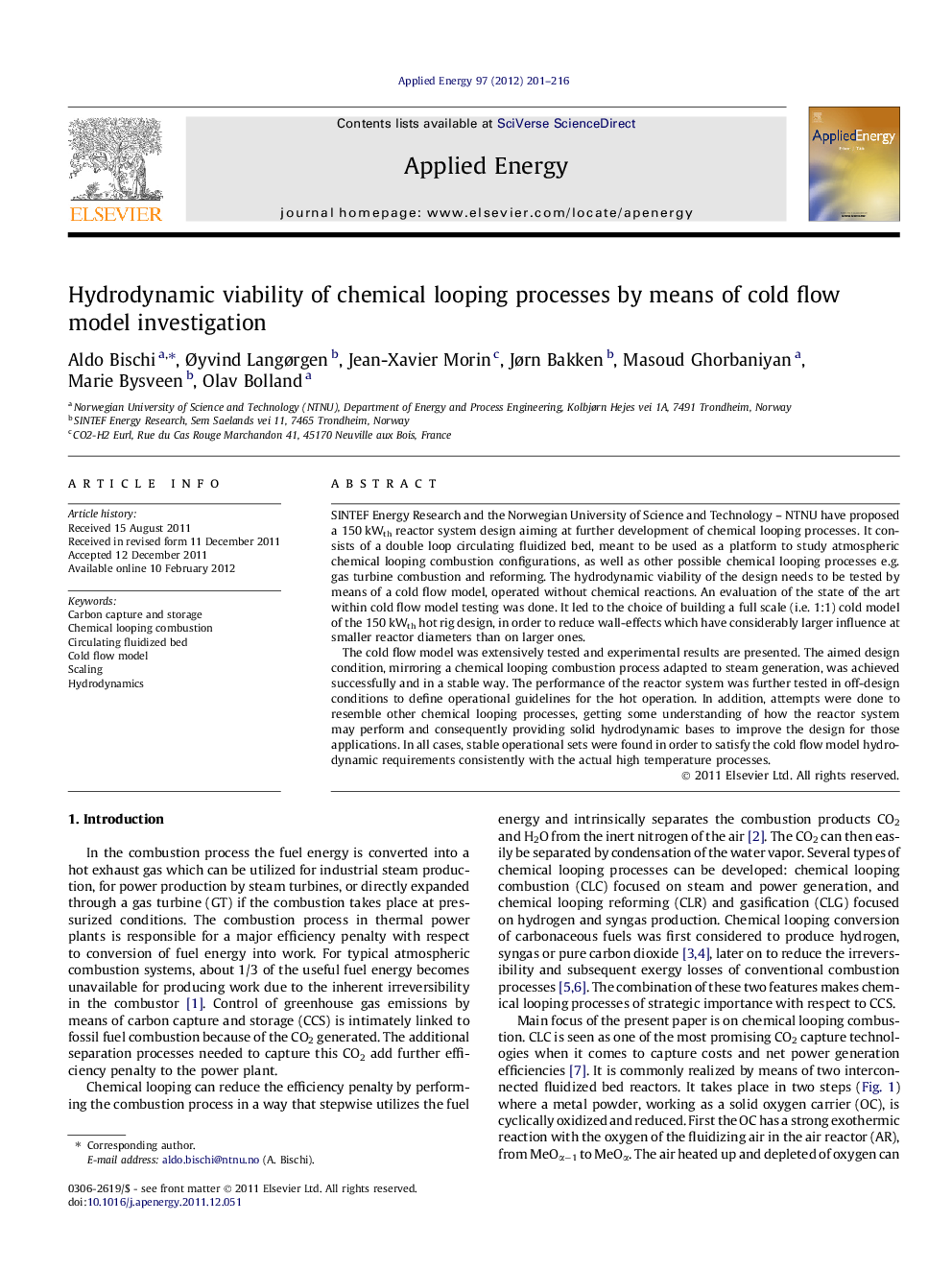| Article ID | Journal | Published Year | Pages | File Type |
|---|---|---|---|---|
| 243498 | Applied Energy | 2012 | 16 Pages |
SINTEF Energy Research and the Norwegian University of Science and Technology – NTNU have proposed a 150 kWth reactor system design aiming at further development of chemical looping processes. It consists of a double loop circulating fluidized bed, meant to be used as a platform to study atmospheric chemical looping combustion configurations, as well as other possible chemical looping processes e.g. gas turbine combustion and reforming. The hydrodynamic viability of the design needs to be tested by means of a cold flow model, operated without chemical reactions. An evaluation of the state of the art within cold flow model testing was done. It led to the choice of building a full scale (i.e. 1:1) cold model of the 150 kWth hot rig design, in order to reduce wall-effects which have considerably larger influence at smaller reactor diameters than on larger ones.The cold flow model was extensively tested and experimental results are presented. The aimed design condition, mirroring a chemical looping combustion process adapted to steam generation, was achieved successfully and in a stable way. The performance of the reactor system was further tested in off-design conditions to define operational guidelines for the hot operation. In addition, attempts were done to resemble other chemical looping processes, getting some understanding of how the reactor system may perform and consequently providing solid hydrodynamic bases to improve the design for those applications. In all cases, stable operational sets were found in order to satisfy the cold flow model hydrodynamic requirements consistently with the actual high temperature processes.
► Double loop circulating fluidized bed is proposed for chemical looping processes. ► Overview of the cold flow model (CFM) scaling criteria is provided. ► A full scale CFM was built for hydrodynamics validation and scale-up estimations. ► The CFM was tested resembling design conditions, off-design, reforming, etc. ► The CFM performance is described in terms of solids exchange and pressure.
